|
By the time the 1990s rolled around, Auto Focus (AF) 35mm SLRs had become the de facto standard for amateur photogs and were well on their way to domination amongst professionals, too. Manual focus (MF) market share had fallen to less than 10% of total SLR production by 1989. As is common when such market shifts occur, manufacturers will often try to compensate for a loss of sales volume by trying to sell higher-margin products. And so it was in the early-'90s: you had dirt-cheap (often sub-contracted), beginner-targeted MF SLRs on one hand, and a retro-wave of premium manual exposure, mechanical-shuttered models at the other, with the previous mid-level MF models all but abandoned. Ever since the advent of practical auto exposure models, there was a small, but vocal, group of hardcore traditionalists who railed against the constant march of automation & polycarbonization of their beloved SLRs. This niche market may have been small, but to the manufacturers with either zero AF market presence (READ: CONTAX, Leica, Olympus), or a relatively strong base of MF users (READ: Nikon) it was one definitely worth pursuing. This is their story... Both Leica and Zeiss had made the decision in the early-1970s to abandon mechanical SLRs in favor of electronic models produced in cooperation with Minolta, and by Yashica, respectively. By the late-'80s, with both companies long having been more niche than mainstream (with Yashica even having to be bought out by the KYOCERA corporation in 1983), they were more prone to listen to the relatively small, but influential group of enthusiasts that were clamoring for a return to the "simpler" manual controls and "all-metal" construction of yesteryear. This demographic was a bit older than your typical "plastic fantastic" AF SLR buyer of the time. And here is where first Leica, and then CONTAX/Zeiss saw opportunity: hardcore, well-heeled enthusiasts willing to pay for their "ideal" mechanical, manual focus SLR while the electronic AF SLR market was well on its way in a "race to the bottom" (hello Canon Rebel ;-)). "Low-volume, high-margin" was already the modus operandi for both brands, so this was a no-brainer. Thus, the posh mechanical SLR (PMSLR) movement grew in step with the posh Point & Shoot (PPS) trend (ironically, also fueled by a CONTAX: the tiny, titanium-sheathed T2) and would peak in the mid-'90s, by which time both Nikon and Olympus joined the fray. A Fearsome Foursome of Photographic Awesomeness Leica. CONTAX. Nikon. Olympus. These manufacturers would comprise our swankilicious SLR syndicate. We will now consider them in the order they appeared and some basic specifications after which we will dig into the juicy bits. The Leica R6/R6.2 If we're going to talk posh, it should never come as a surprise to meet up rather quickly with a Leica :-). But the roots of the R6/6.2 wind their way back to a slightly more plebeian beginning. The R6 was derived as a manual exposure, mechanical shutter model from its electronically-controlled ancestor, the R5 (which was, in turn, a second-generation development following the R4, which had been derived in 1980 from the basic chassis of the Minolta XD/-7/-11 that debuted in 1977). Unleashed upon the public in 1988, at the height of the the AF SLR revolution, the R6 definitely fit the bill of a niche product and was priced accordingly at $4,530 USD (inflation-adjusted to 2022 as are all prices in this article). Popular Photography referred to the price as "breathtakingly high", even when "economizing" with the 50mm Summicron (f/2 @ $665 USD) versus the Summilux (f/1.4 @ $2,510 USD). As always, Leica set the top of the market (easily enough at this stage, when it was in a class of one ;-)) and would do so for the entire PMSLR era. For reference, the R5 came in at $3,010 USD, a third less. Aside from the substitution of the mechanical shutter, the addition of Mirror-Lock-Up (MLU), and the loss of the auto exposure modes of the R5...the R6 had nearly identical specifications, including:
The R6.2 appeared in 1992 (just as it was joined by our next contestant ;-)) with three upgrades over its predecessor:
The CONTAX S2 This was the camera that truly started the struggle for posh mechanical 35mm SLR supremacy. The S2 would distinguish itself from the competition by virtue of being a virtually clean-sheet design (when it came to the exterior styling at least ;-)), rather than being just a gussied-up derivative of an existing model. That is not to say that KYOCERA's engineers didn't take a a verrry close look at the Nikon FM2N (introduced in 1984) when they came up with the S2 as we will see when we look at a few specs:
There would be two things that would make the S2 distinct, the second of which would become a hallmark of the PMSLR. First, although the R6 did offer the option of "almost" spotmetering, the S2 went all-in on the idea of being a machine for experienced photographers only by being singularly faithful to this near-mystical art, and steered even harder into the corner with a center spot comprising only 2.3% (falling comfortably short of the 3% upper limit generally accepted for a true spot pattern) of the film frame area (basically half the area of the R6's) with no other metering option. This would end up complicating matters for CONTAX, which we will get to in a little bit ;-). Second, KYOCERA opted to use one of their favorite upscale materials to encrust their latest photographic jewel: TI...TA...NI...UM...YUM...YUM. I mean come on...posh just drips from your lips (and possibly your nose) when you say it all breathily like that ;-). Don't laugh too hard though; both Nikon and Olympus would introduce their own titanium-enrobed PMSLRs in 1993 and 1994, respectively, completing our fabulous foursome of photographic frippery ;-). Lest you start to get the impression that CONTAX was being somewhat frivolous, check out the retail price of the S2 versus the R6: $2,140 USD for the body and the Carl Zeiss T* 50/1.4 for a steal at $460 USD. If you ever have been in doubt about who really puts the P...O...S...H in photographic posh, that should put it to bed; when Zeiss is almost a third of the cost for the body/lens combination...Leica stands alone ;-). Underneath its sano skin the S2 sported a whole lot of electronic CONTAX DNA. The overall dimensions were very close to the 139Q and 159MM models, with the chassis being a close derivative of the latter's (from the rear, the 159 and S2 are nearly identical, save for the electronic remote release port of the 159MM and the film back w/ window of the S2). The S2 also utilized the same pentaprism and eyepiece that CONTAX had adopted with the 159MM and 167MT models along with the FU-series of interchangeable focusing screens introduced with the 167MT. There was just one problem for the S2. There simply were not enough willing practitioners of spotmetering out there, and soon after its introduction, people were asking for a centerweighted option. Instead of adding the feature to the existing model, Zeiss and KYOCERA chose to make a separate, centerweighted-only model: the S2b. Aside from the meter, the only other difference was its gunmetal finish versus the champagne-toned original. But it was a worthwhile concession...they sold more cameras that way ;-). The Nikon FM2/T Nikon didn't take long to take a cue from the S2, which had taken a few from the evergreen FM2N. Just over a year later, the FM2/T debuted, with the "T" boldly proclaiming their intentions of taking CONTAX and Zeiss on directly in the PMSLR market. It was a bit of an "oh, yeah?" from Nikon, no strangers to using titanium internally and externally for decades (shutters and mirror frames & boxes from the debut of the F in 1959, then releasing the first titanium-covered F2s in 1978 & '79, and following that up with the F3/T in 1982; a black version of which became available in 1984). The titanium exterior was the only change from the otherwise-familiar FM2N. And, just as CONTAX undercut Leica on price (not exactly the most difficult thing in the world to do ;-)), while Nikon brought the FM2/T in at a $450 USD premium over the standard FM2N, they were still a fair chunk of change under the S2, sitting at $1,300 USD, with the 50/1.4 AI-s Nikkor matching the Zeiss 50/1.4 at $460 USD (thus undercutting CONTAX/Zeiss by a third for the combo). In other words, things really hadn't changed much from the 1950s (except for Zeiss threatening to sue the New York Times for daring to compare Japanese optics favorably to theirs ;-)). Discontinued in May 1997. The Olympus OM-3Ti If Nikon's response to the S2 was basically tit-for-tat, Olympus was just grateful to be able to get back into the mechanical SLR game somewhat. Having completely abandoned their abortive attempt at AF with OM-77/-88 in the late-'80s, they had been slogging along with the odd couple of the Cosina-built OM2000 beginner model and the higher-end OM-4Ti, a PESLR (posh electronic SLR :-)). The (relative) success of the S2 (selling in the thousands, rather than tens of thousands per year), gave Olympus a chance to resurrect and revamp their very advanced OM-3 mechanical model, which had originally been introduced in 1984 but was discontinued rather quickly in 1986. This was a result of poor sales and the never-ending AF onslaught, with the OM-3 disappearing from dealer shelves by late-'88. In similar fashion to the derivative nature of the R6/6.2 from the R5, the OM-3Ti was basically an OM-4Ti (introduced in 1987) with a mechanical shutter. Features of the original OM-3 that lived on with the OM-3Ti included:
Improvements inherited from the OM-4Ti were:
The original (non-Ti) OM-3 had last sold for $910 USD and a 50/1.4 Zuiko lens for $250 USD. The rising tide of the R6/6.2 and S2 now floated Olympus to another bracket entirely (more like two-and-a-half ;-)) sitting at $2,500 + $320 USD for the 50/1.4 Zuiko in 1995, placing the opulent OM-3Ti squarely in S2/S2b territory. Let's now take a closer look at how our quixotic quartet stack up against each other in terms of relative cost; two decades after their market finally died at the start of the digital era. First, we will look at the cost of the bodies when last retailed versus now on the used market, and then (and perhaps more importantly) the cost of lenses for them today. Prices when new are from B&H Photo listings (please note that the last available listings for the CONTAX S2b and the Nikon FM2/T were from Dec. 1996); current used prices are for Excellent condition or better from KEH or averaged from sold units on the big auction site (mostly listed as "near mint" which will not equal KEH's Excellent rating 99% of the time; eyeroll); in one case, a "new in box" (NIB) is included.
The first thing that might jump out at you is the level of depreciation on the R6.2: it has depreciated by 68% of its last new value. When compared to the S2 (43%), the S2b (35%), the FM2/T (33%), and the OM-3Ti (29%), it may seem like not a bad deal...but here comes the caveat: lenses. While Leica R bodies can be quite attractive pricewise (particularly the R3 - R5 models), R glass remains the priciest vintage SLR glass around, and not by a small margin. Let's now compare the 50/1.4 standard lenses that were usually kitted with these bodies.
Features and Foibles - Posh Does Not Equal Perfect ;-) So, will paying the premium demanded by any of these fabled SLRs and their accompanying glass guarantee complete photographic fulfillment and eternal bliss? Sorry, reality bites as much as it did in the mid-'90s, and there is still no perfect camera, nor will there ever be as long as they are designed and built by such flawed creatures as ourselves ;-). Each one of these models has its share of quirks and missing features, as hard as that can be to accept when you are dishing out four figures just to have one with a single standard lens. Without further ado, let's have a go at them individually, looking at the good and the bad in relation to each other. Leica R6/6.2 The Leica had the unenviable, yet completely justified, burden of bearing the highest expectations due to its cost when new, even though time and depreciation have now softened the blow a bit (at least when it comes to the camera; lenses are another story). We get a clue as to why the Leica has depreciated considerably more than its peers from the Test Report in Popular Photography of Sept. 1989: "What then is the Leica R6? After all is said and analyzed, it's a gilt-edged paradox, a camera that is stunningly straightforward and thoroughly likeable, and a camera that, to be charitable, carries a list price that is easily twice as much as it ought to be" (the more things change... ;-)). And after referring to the Minolta parentage of the chassis they continued: "Yes, it's definitely well made, and nicely finished, but not breathtakingly so, or better than its rivals" (referring primarily to the Nikon F4; italics ours). And that theme holds for most, if not all, of the functions of the camera:
CONTAX S2/S2b CONTAX had the advantage of being able to carefully examine both the R6 and the Nikon FM2N in the process of developing the S2. And their design choices definitely reflected that. They basically matched the Nikon spec-for-spec and then threw in some sano Porsche Design Group styling with the magic ingredient (titaniumyumyum) for many a posh camera and went a-hunting R-Sixes (which led to Leica hastily upgrading the shutter to come up with the R6.2, trying to remain at least competitive with the S2 on paper). Starting fresh, instead of trying to backwards-engineer an electronically-controlled SLR design, as Leica did, made for a cleaner, and more cohesive design. And bringing it all in at the price point the Leica should have been at was the icing on the cake. Still, there were a couple misses:
Nikon FM2/T The roots of the FM2/T go back to the original FM of 1977. It was Nikon's first compact mechanical SLR, replacing the venerable, full-sized Nikkormat FT series and was targeted at enthusiasts and as a backup body for F-Series-wielding pros, just as the Nikkormats had been. Nikon twice updated it in the intervening 15 years before the S2's release, first in 1982 as the FM2, and then, again, in 1984 as the New FM2 (FM2N). The big improvements being the shutter (1/4000 sec. top speed and 1/250 sec. flash sync) and interchangeable focusing screens (inherited from the FM's electronic twin, the FE of 1978). The FM2N was the main functional target of the CONTAX engineers when they were bringing the S2 to life. With the right & left top plates, prism cover, and bottom plate, together with their colour-matched screws being ostensibly the only changes to create the FM2/T, the list of features and possible foibles is virtually identical to the former model:
Olympus OM-3Ti Finally, we come to the OM-3Ti. Being an Olympus instantly qualified it as having some quirks (the collar-mounted shutter speed control, and forward aperture ring location on most Zuiko lenses being the most apparent). This control layout also precluded having the set aperture displayed in the viewfinder (definitely not the end of the world among this bunch, with the S2/S2b to keep it company ;-)). The multi-spot/centerweighted meter was undeniably the most advanced in the class, even if it took a bit of getting used to (again, Olympus = quirky, yet effective :-)). Of all these cameras, the Olympus could make a case for being the most "professional" among them, with the largest viewfinder, fastest motor drive, and a plethora of specialist accessories. The Super FP high-speed sync. TTL flash was definitely more gimmicky than practical (the range was so short that it was useful only in a few very specific cases), but a feature that would, nevertheless, be adopted by other manufacturers in time. On paper, the lack of MLU was a drawback, but honestly, not the end of the world, with Leica's imperfect implementation, and the sometimes-impractical, self-timer-activated type used by the CONTAX and Nikon not really granting a decisive advantage in most situations. MLU was a long way down the list of critical features for almost every potential buyer of PMSLRs. It would be interesting to know how many true professionals actually used any of these SLRs, as it always has been the enthusiast, more than the pro, that drives sales of photographic gear (especially the geek-out, luxury-targeted stuff). That is not to say that pros did not make use of any of these cameras, but they were among the minority of buyers and users ;-). PMSLRs Today - Are They Worth the Premium? In the midst of the latest social media-fueled PPS boom, PMSLRs have seen a similar renaissance. While certainly built to a much higher quality standard than the plastic-glutted innards of the PPS crowd, the question remains: are PMSLRs really worth the considerable sum they command over more mainstream vintage SLR offerings? Objectively, of course, the answer is no. Red dots and titanium are, at best, tangental to actual photographic accomplishment. But objectivity is the last thing on anyone's mind when considering these types of cameras. Instead, it is all about how having/using one makes you feel :-). A larger part of the decision (as with any SLR) should be about the lenses and their cost. It is no big surprise that any given Leitz R-mount lens is going to run you 5 - 10 times more money than the corresponding Zeiss C-Y, Nikkor, or any of the standard Zuikos (the more premium 80's-era Zuikos have gone all Leitz-native in the last few years when it comes to price, due to their relatively small production numbers). So, should you buy one? That's for you to decide, but bear in mind a couple of points:
Wrap-Up The bottom line? PMSLRs came about as the film era was entering its final decade. They were a fairly blatant attempt to cash in on a niche, but vocal market. And it worked...for a few years, until that market saturated (tellingly, Nikon bailed out after only three-and-a-half years, with around 25,000 units produced, with CONTAX producing an almost identical amount of S2/S2bs). The others also sold in the low tens-of-thousands range. Which has served to keep values up (limited production has been Leica's bread & butter for the last several decades ;-)). Luxury items are just that, not remotely necessary, but something to be enjoyed, nonetheless. No, none of these will make you a "better" photographer. But that has never really been the point, anyways. If you have one already or can afford it, go head and enjoy it. If you don't or can't, relax. Your photography will not suffer, either way :-). References: Various Contax Brochures & Documents @ https://www.contax139.co.uk/ Contax S2 User Manual @ https://www.butkus.org Leica R5, R6, & R6.2 User Manuals @ www.butkus.org Leica R6 Review @ https://www.apotelyt.com/camera-review/leica-r6 Leica R-System Brochure - 1996-97 Handbook of the Leica System - 1995 The book of the LEICA R-series Cameras (2019) by Brian Long Leica R6 Test - Popular Photography Sept. 1989 Nikon FM2N User Manual @ http://cdn-10.nikon-cdn.com Nikon A Celebration (Third Edition; 2018) by Brian Long Nikon FM2/T Year of the Dog edition @ https://www.cameraquest.com/nikonfm2.htm Olympus OM-3Ti & OM-4Ti User Manuals @ https://www.butkus.org
22 Comments
11/4/2022 12:10:53 am
Thanks for this informative and entertaining post! And thank you for introducing another term to me, PMSLR.
Reply
C.J. Odenbach
11/4/2022 07:40:44 am
Thanks for the kind comment Shawn. Just what the photographic community needs, eh...another acronym ;-).
Reply
11/5/2022 11:21:57 pm
You are welcome, C. J.!
C.J. Odenbach
11/5/2022 11:42:18 pm
That is too cool, Shawn. It's crazy how many people I have run into from the other side of country or the States that ask where I'm from and when I say "Vegreville", they reply "oh, the place with the big egg" or just like you they have actually seen it. Never ceases to amaze me :-). 11/6/2022 12:08:53 am
Heh! Now you need to do all your "lens tests" shooting that pysanka.
Reply
C.J. Odenbach
11/6/2022 12:19:10 am
Ha, ha! That would be great for field curvature and distortion. Every old lens would pass with flying colors ;-).
Reply
Tom
11/7/2022 06:27:14 pm
"And of course, the titanium top & bottom plates, but in a gunmetal finish similar to the CONTAX S2b. Hmmmm?"
Reply
11/7/2022 10:04:01 pm
"But today, what is analog photography but at worst an expensive hobby and at best a creative and artistic pursuit? And if you are making art, doesn't it help to use something that sparks your creativity? Working so hard, don't we deserve a taste of the finer things every now and then?"
Reply
C.J. Odenbach
11/7/2022 10:52:56 pm
Well said, Tom. Film photography nowadays is a luxury in itself, and certainly can be enjoyed as such. If a person can afford a posh SLR system of any kind in that pursuit, have at it by all means.
Reply
Melvin Bramley
12/5/2022 06:30:08 pm
The Nikon FM, FE series was possibly the best bang for the buck camera ever produced be you a professional or amateur.
Reply
C.J. Odenbach
12/5/2022 08:23:36 pm
Hi Melvin. I agree that the FM/FE chassis is arguably the most flexible series of Nikon manual focus SLRs ever produced. You can tell that CONTAX was directly looking to match it with the S2/S2b. And that all Nikon had to do to take it into "posh" territory was a simple re-skin and a 50% price-boost and still undercut the CONTAX by 30%, spoke volumes about the intrinsic value in the platform.
Reply
Melvin Bramley
1/26/2023 05:58:30 pm
No matter how well specified I would avoid any "hybrid' camera .
Reply
C.J. Odenbach
1/28/2023 09:34:47 am
Hi Melvin,
Reply
1/28/2023 04:17:36 pm
I dunno, the fact that Pentax is going to tackle making some film cameras again gives me hope. It won't be easy and they probably won't be cheap. But never say never.
Tom
1/29/2023 02:23:22 pm
"No matter how well specified I would avoid any 'hybrid' camera .
Reply
C.J. Odenbach
1/29/2023 03:46:43 pm
Well said, Tom. And thanks for the reference. Best regards.
C.J. Odenbach
1/28/2023 07:28:03 pm
I would love to see Pentax do it, Shawn. But talk is cheap and Ricoh could pull the pin on the camera division anytime. If they manage to do it, I have a feeling it will be a PMSLR for the 21st century ;-). Better than nothing, but still about as niche as it gets. Best regards.
Reply
1/28/2023 07:29:56 pm
Sounds like they're going to tackle a point-and-shoot first. So they might not even get as far as a (PM)SLR.
Reply
C.J. Odenbach
1/29/2023 12:28:48 am
Might not be a bad idea. At least that should keep the costs down somewhat. Price will probably be as important, if not more so, as the outright capability of the camera. Pentax has a long history with P&S and updating one with the latest manufacturing techniques should be well within their abilities. We shall see :-).
Reply
Linden
3/30/2024 05:03:00 am
A superbly written article, demonstrating a lot of first hand experience, expertise, and more so an ability to distill all this and present it articulately and with flourish - like all the articles here do. Thank you for inventing the nomenclature (and acronym) for a range of SLRs, ahem PMSLRs that have drifted into view and sparkled in shallow appeal. (And thank you for avoiding the more bruising more-money-than-sense type language).
Reply
C.J. Odenbach
3/30/2024 11:52:17 am
Glad to hear you are enjoying the blog, Linden, and thanks for the kind comment.
Reply
Linden
4/5/2024 07:25:20 am
Thanks for this advice C.J.
Reply
Your comment will be posted after it is approved.
Leave a Reply. |
C.J. OdenbachSuffers from a quarter-century and counting film and manual focus SLR addiction. Has recently expanded into 1980's AF point and shoots, and (gack!) '90s SLRs. He even mixes in some digital. Definitely a sick man. Categories
All
Archives
June 2024
|
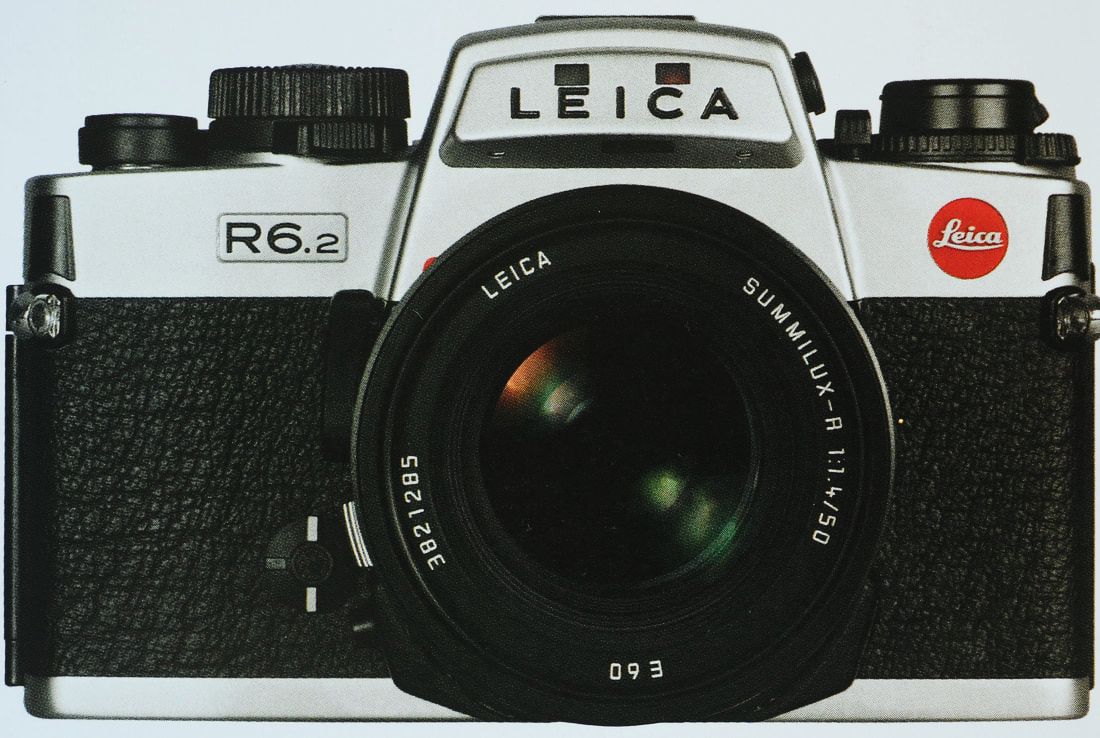
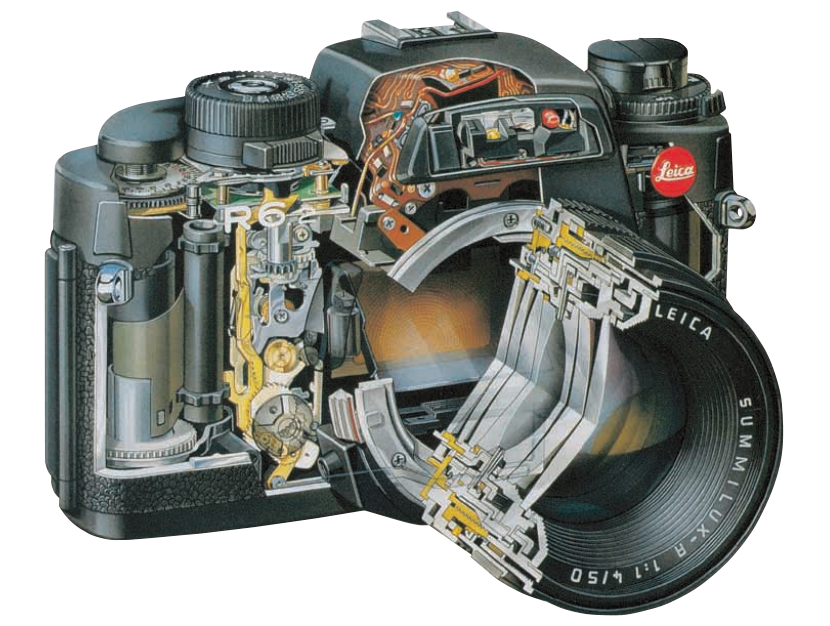
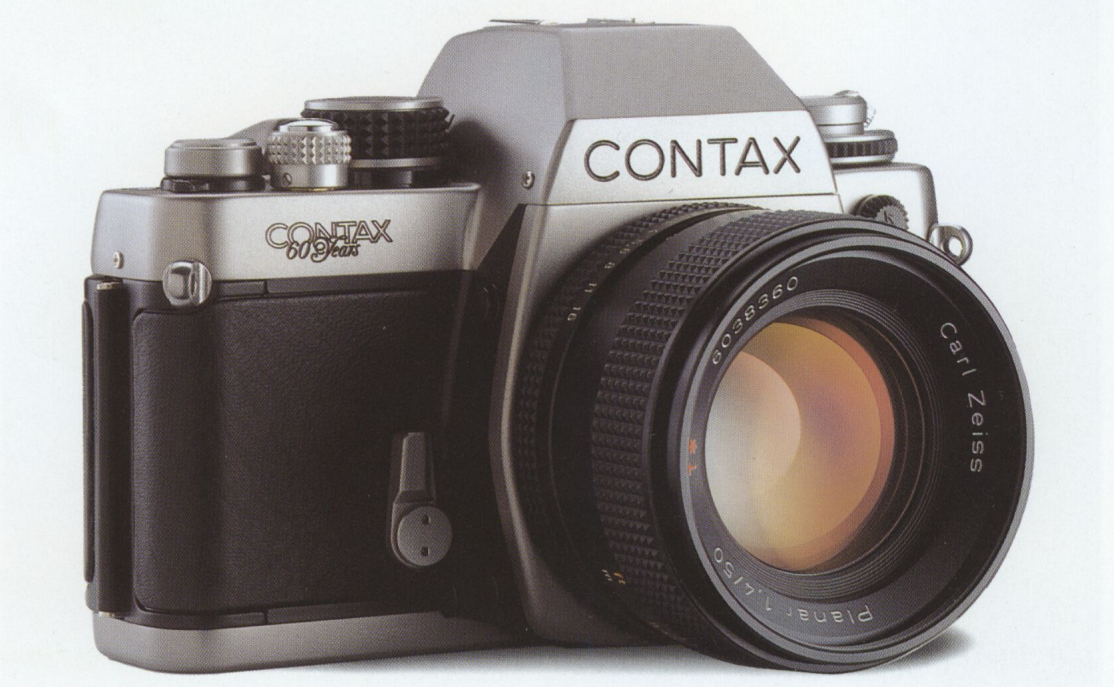
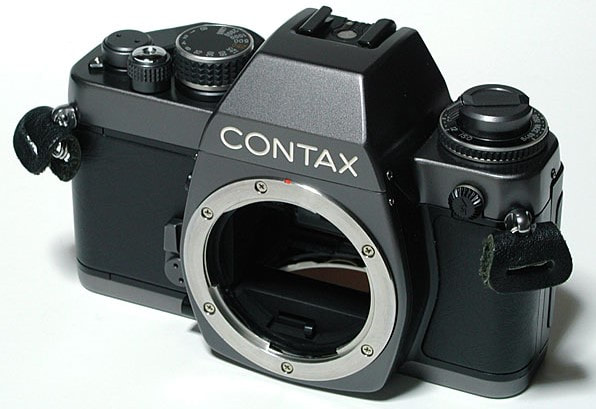
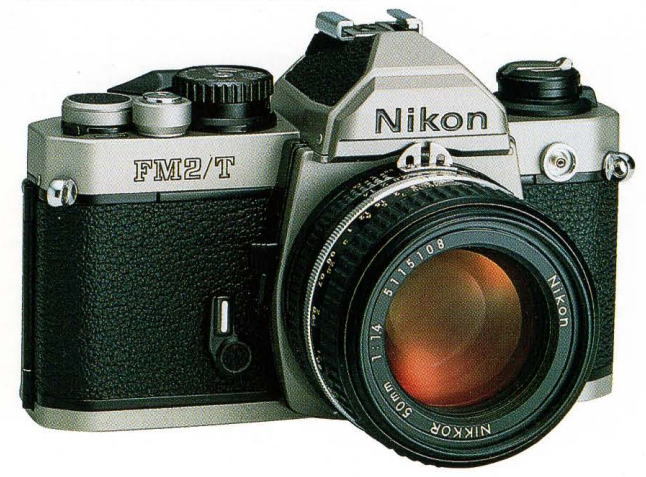
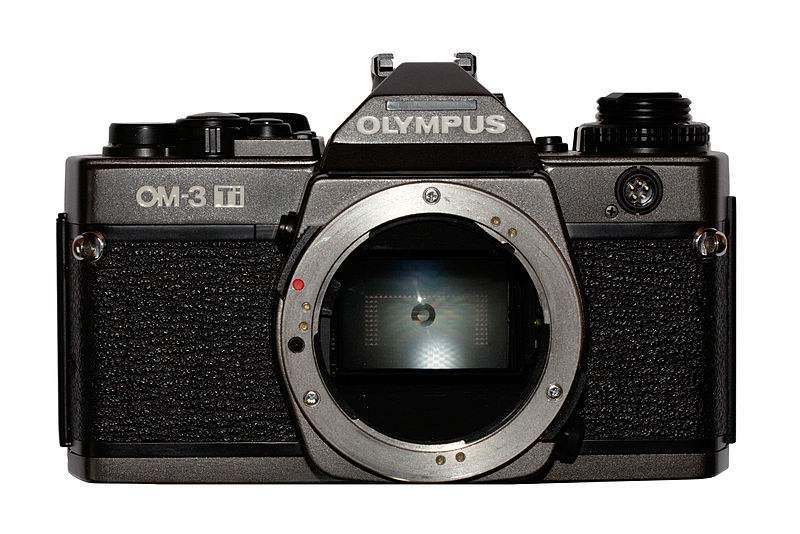
 RSS Feed
RSS Feed